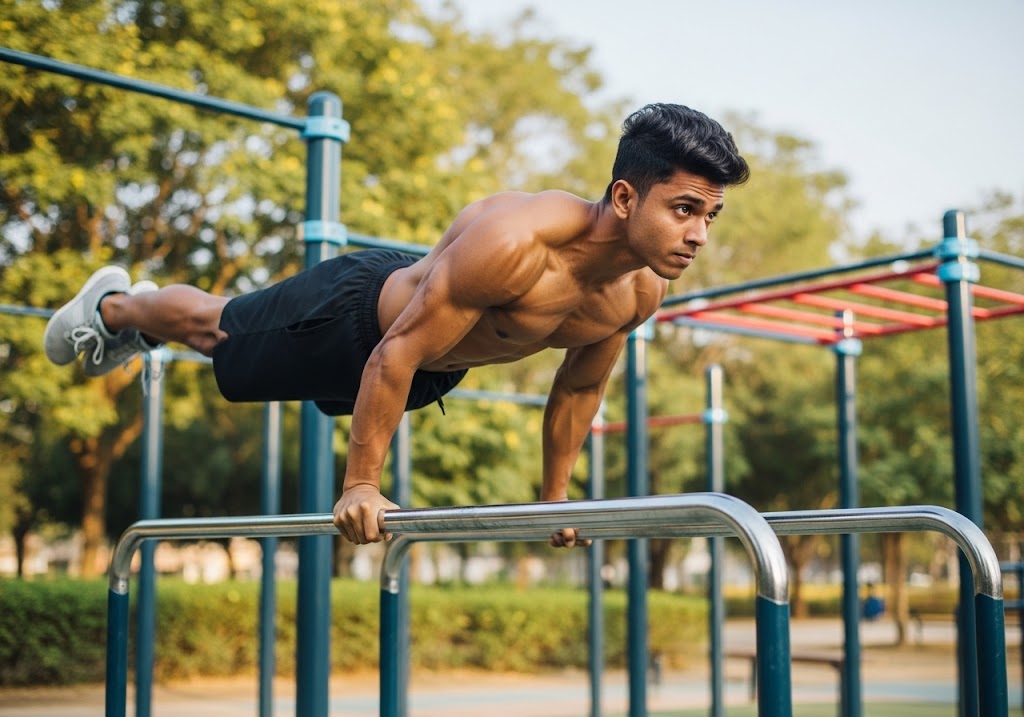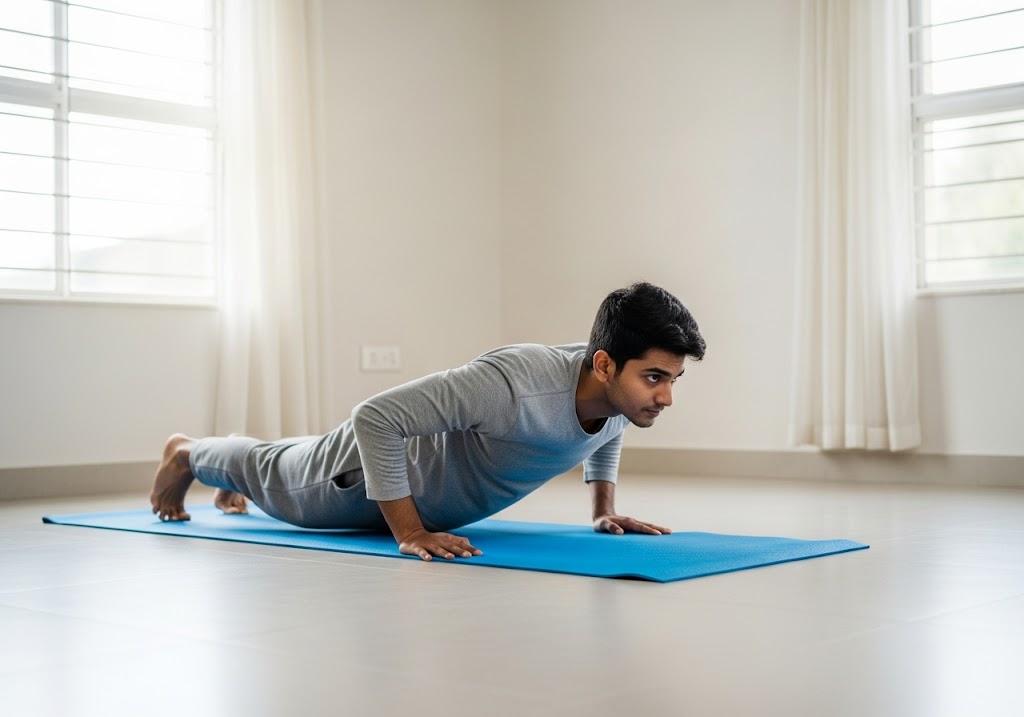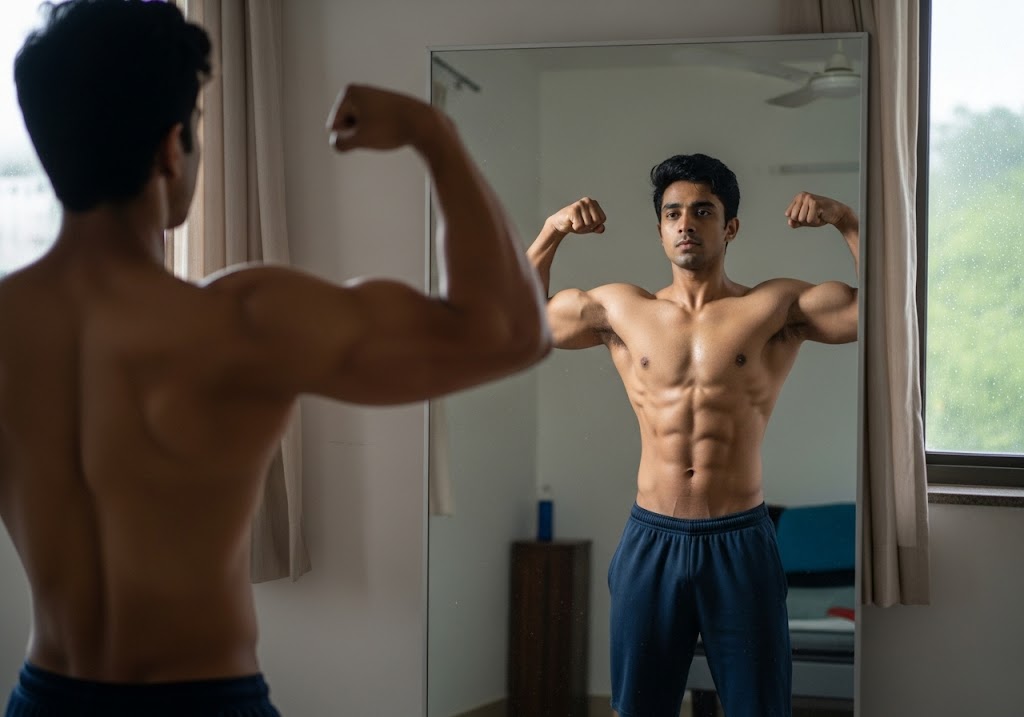Key steps for how to do a perfect squat are: Proper stance, feet shoulder-width apart, chest up, core engaged, controlled descent, knees tracking over toes, full depth, and explosive drive up.
Want to master how to do a perfect squat that builds incredible leg strength while protecting your joints? The squat is often called the king of all exercises because it works multiple muscle groups and provides tremendous functional benefits. This complete plan reveals exactly how to do a perfect squat using proper form, progressive techniques, and safety considerations for lasting results.
Learning how to do a perfect squat for beginners requires understanding that proper form always takes priority over heavy weight or speed. Whether you’re performing bodyweight squats or adding external resistance, the fundamental movement patterns remain the same. This comprehensive plan covers everything from basic form to advanced variations for complete squat mastery.
Table of Contents
How to Do a Perfect Squat Every Time?: Step by Step
Mastering squat technique requires breaking down the movement into specific steps that ensure proper form and maximum effectiveness. Following this systematic approach helps you learn how to do a perfect squat while building the muscle memory needed for consistent execution.
| Step | Action | Key Focus | Common Error | Correction |
| 1 | Setup stance | Feet shoulder-width apart | Too narrow/wide | Adjust to comfort |
| 2 | Foot position | Toes slightly out | Pointed straight | 15-30 degree angle |
| 3 | Core engagement | Brace abs tight | Loose core | Deep breath, tighten |
| 4 | Hip hinge | Push hips back | Knees forward first | Sit back motion |
| 5 | Descent | Control the lowering | Dropping down fast | 2-3 second descent |
| 6 | Depth | Hip crease below knees | Partial range | Full depth safely |
| 7 | Knee tracking | Over toes | Caving inward | Push knees out |
| 8 | Ascent | Drive through heels | Rising on toes | Whole foot contact |
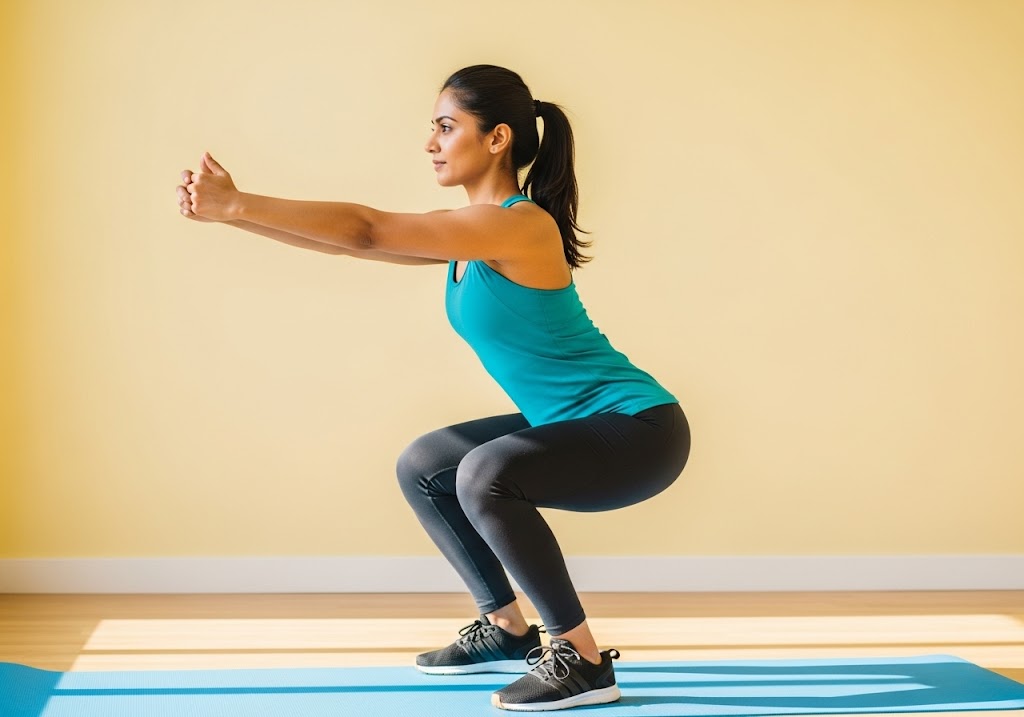
Step 1: Setup Your Stance
Begin every perfect squat by positioning your feet shoulder-width apart for optimal stability and power generation. This width allows natural hip and knee movement while providing a strong base of support throughout the entire movement pattern. Finding your ideal stance width is crucial for learning how to do a perfect squat consistently.
Step 2: Position Your Feet
Turn your toes slightly outward at a 15-30 degree angle to match your natural hip anatomy and allow deeper squats. This positioning reduces knee stress while improving overall movement quality and comfort. Proper foot positioning is essential when learning how to do a perfect squat for beginners.
Step 3: Engage Your Core
Take a deep breath and brace your abdominal muscles as if someone were about to punch your stomach. This internal pressure protects your spine and provides stability throughout the squatting movement. Core engagement is fundamental to how to do a perfect squat safely.
Step 4: Initiate the Hip Hinge
Start the squat by pushing your hips backward as if sitting into a chair behind you. This movement pattern engages the glutes and hamstrings while maintaining proper knee alignment throughout the descent. The hip hinge is critical for learning how to do a perfect squat without weights.
Step 5: Control Your Descent
Lower your body slowly over 2-3 seconds to maintain tension and control throughout the movement. This tempo builds strength through the full range of motion while preventing bouncing at the bottom position. Controlled descent is key to how to do a perfect squat with proper form.
Step 6: Achieve Proper Depth
Descend until your hip crease drops just below your knee level for full range of motion and maximum muscle activation. This depth ensures you receive all the benefits of learning how to do a perfect squat while building strength and mobility.
Step 7: Track Your Knees
Ensure your knees move in line with your toes throughout the movement to prevent injury and maintain proper alignment. Push your knees outward slightly to engage the glutes and maintain structural integrity during how to do a perfect squat execution.
Step 8: Drive Up Explosively
Drive through your heels and push the floor away to return to the starting position with power and control. Maintain the same path upward that you followed during the descent for optimal efficiency. This explosive drive completes how to do a perfect squat properly.
For those interested in bodyweight leg training that complements squats, exploring calisthenics leg exercises provides excellent variations and progressions.
The Basics: Proper Squat Form
Understanding proper squat form creates the foundation for all squat variations and prevents movement compensations that lead to injury. Mastering how to do a perfect squat without weights establishes movement patterns that transfer safely to weighted variations. Proper alignment starts from the ground up, with feet firmly planted and weight distributed evenly.
Your knees should track in line with your toes while your torso maintains an upright position with natural lower back arch. The breathing pattern plays a crucial role – inhale at the top, hold during descent, then exhale during ascent to maintain spinal protection throughout how to do a perfect squat execution.
For comprehensive lower body development, best workout to lose weight and gain muscle includes squats as a fundamental exercise for body transformation.
How Low Should You Squat?
The optimal squat depth is when your hip crease drops just below your kneecap level, achieving what’s called “breaking parallel.” This depth ensures maximum glute and quadriceps activation while maintaining safe knee mechanics. Going deeper than parallel can provide additional benefits including increased muscle activation, improved hip mobility, and enhanced functional strength for daily activities.
However, squat depth should be individualized based on your anatomy, mobility, and experience level. Factors like ankle flexibility, hip structure, and current strength determine your safe depth range. Beginners should focus on achieving parallel depth with perfect form before progressing deeper. Listen to your body and gradually increase depth as mobility and strength improve over time.
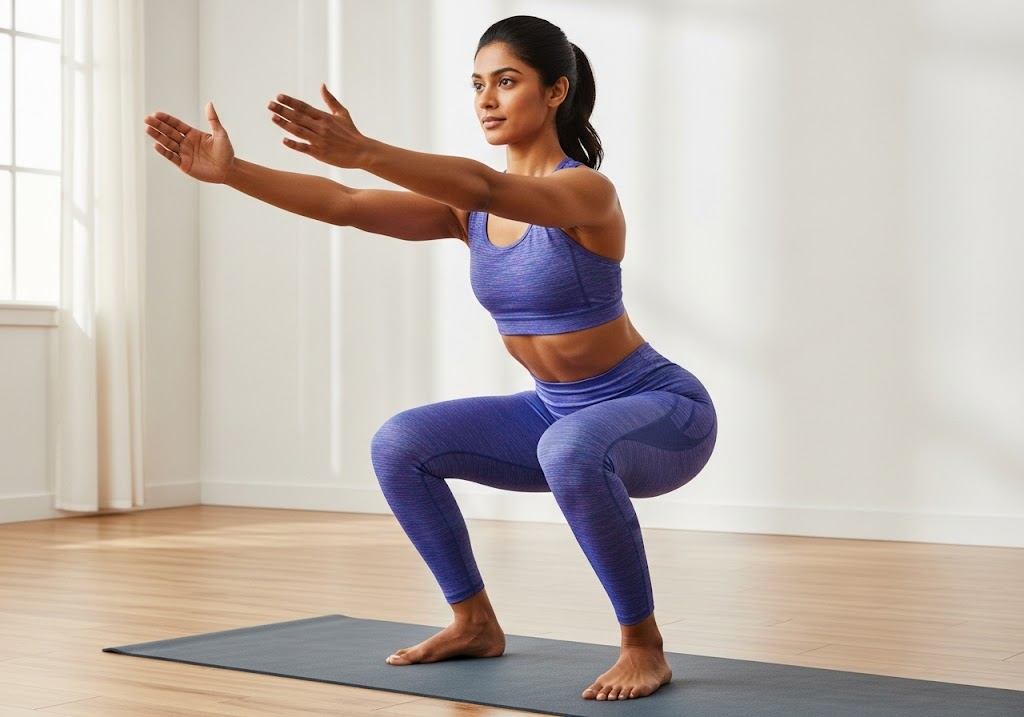
What Muscles Do Squats Work?
Squats work multiple muscle groups simultaneously, making them one of the most effective exercises for building functional strength and muscle mass. Understanding which muscles are involved helps you appreciate why learning how to do a perfect squat provides such comprehensive benefits for your entire body. The primary muscles worked include the quadriceps (front thigh), glutes (buttocks), and hamstrings (back thigh). These large muscle groups generate the majority of the power needed for standing up from the squatted position while providing stability during the descent.
| Muscle Group | Primary Function | Squat Role | Development Benefits |
| Quadriceps | Knee extension | Ascent power | Leg strength, size |
| Glutes | Hip extension | Hip drive | Power, shape |
| Hamstrings | Knee flexion | Descent control | Posterior strength |
| Calves | Ankle stability | Balance support | Lower leg strength |
| Core | Spinal stability | Posture maintenance | Core strength |
| Upper Back | Postural support | Chest position | Posture improvement |
Secondary muscles include the calves for ankle stability, core muscles for spinal support, and upper back muscles for maintaining proper posture. This total-body involvement explains why squats burn so many calories and provide such comprehensive fitness benefits.
For targeted core development that supports squat performance, calisthenics ab workout provides excellent exercises for building the stability needed for perfect squats.
Health Benefits of Squats
Regular squat practice provides numerous health benefits that extend far beyond muscle building and strength development. Learning how to do a perfect squat contributes to improved mobility, bone density, cardiovascular health, and functional movement patterns that enhance daily life activities and long-term wellness.
- Increased Bone Density: Weight-bearing exercise like squats stimulates bone formation and helps prevent osteoporosis throughout life
- Improved Balance: Squatting challenges proprioception and stability, reducing fall risk and improving coordination significantly
- Enhanced Metabolism: Large muscle group activation increases metabolic rate during and after exercise for improved fat burning
- Better Functional Movement: Squatting mimics daily activities like sitting, standing, and lifting for improved life quality
- Reduced Injury Risk: Strengthened legs and core provide better support for the spine and joints during activities
- Improved Athletic Performance: Hip and leg power development transfers to jumping, running, and sports activities effectively
Discover how many calories you can actually burn with calories burned from pull ups
How Many Squats Should You Do a Day?
The optimal number of daily squats depends on your fitness level, goals, and overall training program. Beginners learning how to do a perfect squat for beginners should focus on quality over quantity, starting with 2-3 sets of 10-15 repetitions with perfect form rather than high numbers with poor technique. Progressive overload applies to bodyweight squats just as it does to weighted versions. Start with a manageable number and gradually increase repetitions, sets, or difficulty as your strength and endurance improve over time.
| Experience Level | Daily Volume | Focus | Progression |
| Beginner | 20-50 squats | Form mastery | Add 5-10 per week |
| Intermediate | 50-100 squats | Strength building | Add difficulty |
| Advanced | 100+ squats | Maintenance/endurance | Variations, weight |
| Rehabilitation | 10-30 squats | Movement quality | Very gradual increase |
Quality always trumps quantity when it comes to squat training. Perfect form for fewer repetitions provides better benefits than sloppy form for higher numbers. Focus on controlled movement and full range of motion rather than rushing through high repetition counts.
For overall fitness routines that include squats, calisthenics exercises provides comprehensive bodyweight training programs.
How Many Calories Do Squats Burn?
Squats burn calories during exercise and for hours afterward due to large muscle mass involvement and metabolic demands. Learning how to do a perfect squat maximizes calorie burn through proper form and intensity, making squats excellent for weight management and fat loss goals.
| Body Weight | Calories per Minute | 10-Minute Session | 20-Minute Session | With Weights |
| 50 kg | 6-8 calories | 60-80 calories | 120-160 calories | +30% more |
| 60 kg | 7-10 calories | 70-100 calories | 140-200 calories | +30% more |
| 70 kg | 8-12 calories | 80-120 calories | 160-240 calories | +30% more |
| 80 kg | 9-14 calories | 90-140 calories | 180-280 calories | +30% more |
| 90 kg | 10-16 calories | 100-160 calories | 200-320 calories | +30% more |
Curious about your burn rate? Find out in 30 minute cardio calories burned
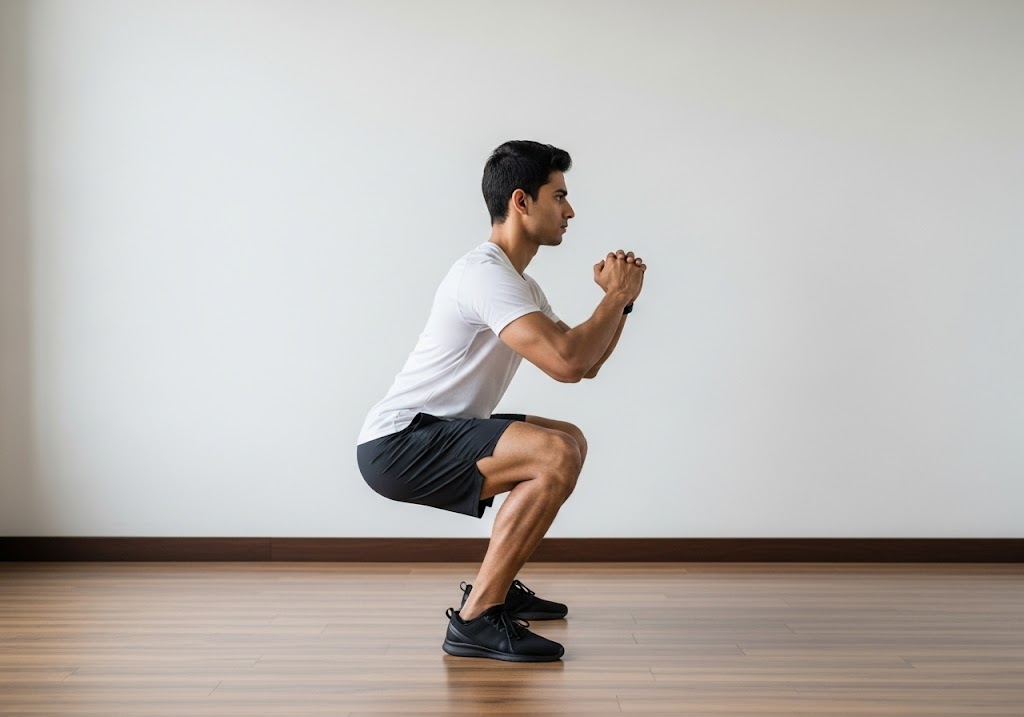
What You’ll Need for a Perfect Squat?
The beauty of learning how to do a perfect squat without weights is that minimal equipment is required for effective training. You need adequate space, comfortable workout attire, and proper footwear with flat, stable soles for optimal balance and force transfer during squatting movements.
| Equipment Level | What You Need | Benefits | Limitations |
| Bodyweight Only | Space, flat shoes | Convenience, safety | Limited resistance |
| Basic Equipment | Resistance bands | Variable resistance | Moderate challenge |
| Home Gym | Dumbbells, kettlebells | Progressive loading | Space requirements |
| Full Gym | Barbell, squat rack | Maximum loading | Cost, access |
Optional equipment includes mirrors for form checking, yoga mats for floor comfort, and resistance bands for assistance or added difficulty. These tools can enhance your training but aren’t necessary for mastering perfect squat technique.
For balanced upper body development, calisthenics chest exercises provides excellent complementary training for complete fitness.
How to Add Weight to Squats?
Progressing from bodyweight to weighted squats requires gradual progression and continued focus on perfect form throughout the loading process. Learning how to do a perfect squat with weights builds upon movement patterns established during bodyweight training while adding external resistance for increased challenge. Start with light resistance such as holding a single dumbbell at chest level.
Progressive loading strategies include increasing weight by 2-5 kg per week once you can complete all sets with perfect form. Never sacrifice technique for heavier weight, as poor form under load significantly increases injury risk. Different loading methods provide unique benefits for learning how to do a perfect squat with bar positioning and weight distribution.
For comprehensive strength training, compound dumbbell exercises includes weighted squat variations and other compound movements.
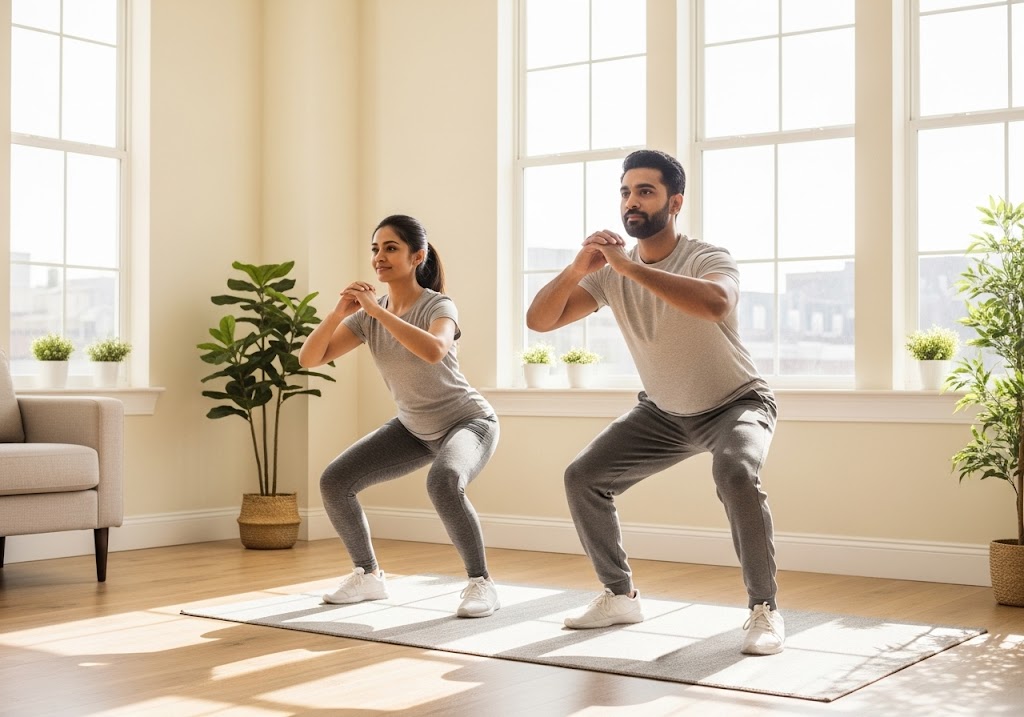
Extra Tips for How to Do a Perfect Squat
These advanced tips help refine your squat technique and address common challenges that arise as you progress in your training. Implementing these strategies ensures continued improvement in how to do a perfect squat while preventing plateaus and movement compensations.
- Warm Up Properly: Begin each session with dynamic stretches and activation exercises to prepare your joints and muscles for squatting
- Focus on Mobility: Regularly stretch your hips, ankles, and thoracic spine to maintain the flexibility needed for deep, comfortable squats
- Practice Daily: Frequent practice with light loads or bodyweight helps ingrain proper movement patterns and improve technique consistency
- Film Yourself: Recording your squats from different angles helps identify form issues that you might not feel during the movement
- Listen to Your Body: Respect pain signals and adjust depth or load accordingly to prevent injury and maintain long-term training consistency
- Breathe Properly: Master the breathing pattern of inhaling before descent, holding during the movement, and exhaling during ascent for optimal performance
Understanding proper recovery is important, so exploring techniques that support training helps maintain consistency and progress over time.
Learn the proper technique for effective ab activation with how to do bicycle crunches.
Front Squats Vs Back Squats: Which is Best?
Both front and back squat variations offer unique benefits and challenges that make them valuable for different training goals and individual needs. Understanding when and how to use each variation helps create a comprehensive approach to learning how to do a perfect squat with bar positioning.
Front squats emphasize quadriceps development and core stability while requiring greater mobility and balance. The front-loaded position naturally promotes upright torso posture and teaches proper squat mechanics, making them excellent for beginners and those with back issues.
| Aspect | Front Squats | Back Squats | Winner |
| Quad Development | Excellent | Good | Front |
| Glute Development | Good | Excellent | Back |
| Core Demand | Very High | Moderate | Front |
| Mobility Requirements | High | Moderate | Back |
| Weight Capacity | Lower | Higher | Back |
| Learning Curve | Steeper | Gentler | Back |
| Spinal Safety | Safer | Requires care | Front |
| Athletic Transfer | Sport-specific | General strength | Depends |
Back squats allow for heavier loading and greater glute/hamstring involvement, making them superior for maximum strength development and muscle building. However, they require more technical skill and mobility to perform safely with heavy weights.
For advanced bodyweight challenges, calisthenics handstand provides excellent upper body training that complements leg strength development.
Squat Variations: How to do & Instructions.
Squats are fundamental movement patterns that can be modified to target different muscles, challenge various fitness levels, and prevent training monotony. These variations range from beginner-friendly assisted movements to advanced single-leg challenges, each offering unique benefits for strength, power, balance, and mobility development throughout your lower body.
Squat Variations Overview
| Sr.No. | Exercise | Difficulty | Primary Muscles | Equipment | Special Focus |
|---|---|---|---|---|---|
| 1 | Basic Squat | Beginner | Quads, Glutes | None | Foundation movement |
| 2 | Jump Squats | Intermediate | Quads, Glutes, Power | None | Plyometric training |
| 3 | Goblet Squats | Beginner-Intermediate | Quads, Glutes, Core | Dumbbell/Kettlebell | Front-loaded |
| 4 | Bulgarian Split Squats | Intermediate | Quads, Glutes, Balance | Bench/Chair | Unilateral strength |
| 5 | Pistol Squats | Advanced | Quads, Glutes, Balance | None | Single-leg mastery |
| 6 | Sumo Squats | Beginner-Intermediate | Inner thighs, Glutes | None | Wide stance |
| 7 | Wall Squats | Beginner | Quads, Glutes | Wall | Assisted movement |
| 8 | Overhead Squats | Advanced | Full body, Shoulders | None/Barbell | Mobility challenge |
| 9 | Cossack Squats | Intermediate-Advanced | Lateral muscles, Flexibility | None | Lateral movement |
| 10 | Hindu Squats | Intermediate | Quads, Calves, Endurance | None | Continuous motion |
Detailed Squat Variation Instructions
Each squat variation requires specific technique, setup, and execution to maximize benefits while maintaining safety. These detailed instructions break down proper form, key coaching points, and common mistakes for each movement. Focus on mastering technique before progressing to higher repetitions, additional resistance, or more challenging variations for optimal results.
1. Basic Squat
The basic squat serves as the foundation for all squat variations, teaching proper hip hinge mechanics, knee tracking, and core stability. This fundamental movement builds lower body strength while improving functional mobility patterns essential for daily activities. Mastering the basic squat is crucial before progressing to more advanced variations that require greater strength, balance, or coordination.
How to Do Basic Squats?
- Stand with feet shoulder-width apart, toes slightly pointed outward, and lower by pushing hips back while bending knees
- Descend until thighs are parallel to ground, keeping chest up and knees tracking over toes throughout movement
- Drive through heels to return to starting position, engaging glutes and maintaining straight spine alignment
2. Jump Squats
Jump squats add explosive plyometric training to the basic squat movement, developing power, athleticism, and cardiovascular conditioning simultaneously. This dynamic variation builds fast-twitch muscle fibers while improving vertical jump ability and overall explosive strength. The high-intensity nature makes jump squats excellent for burning calories while developing functional power essential for sports and athletic performance.
How to Do Jump Squats?
- Start in basic squat position, then explosively jump up as high as possible while extending arms overhead
- Land softly with bent knees, immediately descending into next squat without pause between repetitions
- Focus on controlled landings and maintaining proper squat form despite the explosive nature of movement
3. Goblet Squats
Goblet squats introduce front-loaded resistance using a dumbbell or kettlebell, improving squat mechanics while building upper body strength and core stability. The front-loaded weight naturally encourages proper upright posture and deeper squat depth while providing scalable resistance. This variation serves as an excellent bridge between bodyweight squats and barbell movements while teaching proper weight distribution.
How to Do Goblet Squats?
- Hold dumbbell or kettlebell at chest level with both hands, elbows pointing down throughout movement
- Perform squat movement while keeping weight close to body and maintaining upright torso position
- Use the weight as counterbalance to achieve deeper squat depth while focusing on controlled movement patterns
4. Bulgarian Split Squats
Bulgarian split squats challenge unilateral leg strength and balance by elevating the rear foot, creating an intense single-leg focused movement. This variation addresses muscle imbalances between legs while improving balance, coordination, and functional strength patterns. The elevated rear foot position increases the range of motion and difficulty while building exceptional single-leg strength and stability.
How to Do Bulgarian Split Squats?
- Stand 2-3 feet in front of bench or chair, place top of one foot behind you on elevated surface
- Lower body by bending front knee until thigh is parallel to ground, keeping most weight on front leg
- Push through front heel to return to starting position, completing all reps before switching legs
5. Pistol Squats
Pistol squats represent the ultimate single-leg squat challenge, requiring exceptional strength, balance, flexibility, and coordination to execute properly. This advanced movement builds unilateral leg strength while testing ankle mobility, hip flexibility, and core stability simultaneously. The demanding nature makes pistol squats a true test of functional strength and body control for advanced practitioners.
How to Do Pistol Squats?
- Stand on one leg with other leg extended straight in front, arms forward for balance
- Lower into deep squat on standing leg while keeping extended leg parallel to ground throughout
- Drive through heel to return to standing position, maintaining balance and control throughout entire movement
6. Sumo Squats
Sumo squats utilize a wide stance to target the inner thighs, glutes, and adductor muscles more effectively than traditional squats. This variation accommodates different hip structures while providing excellent glute activation and inner thigh strengthening. The wider stance often allows for deeper squat depth while reducing stress on the knees for those with mobility limitations.
How to Do Sumo Squats?
- Stand with feet significantly wider than shoulder-width, toes pointed outward at 45-degree angle
- Lower by pushing hips back and bending knees, keeping knees tracking over toes throughout descent
- Descend until comfortable depth is reached, then drive through heels while squeezing glutes to return up
7. Wall Squats
Wall squats provide assisted support for beginners learning proper squat mechanics or those recovering from injury needing additional stability. The wall support allows focus on movement patterns without balance concerns while building leg strength progressively. This variation teaches proper squat depth and knee tracking while providing confidence for those new to squatting movements.
How to Do Wall Squats?
- Stand with back against wall, feet positioned 12-18 inches away from wall base
- Slide down wall by bending knees and hips, keeping back in contact with wall throughout movement
- Lower until thighs are parallel to ground, then press through heels to slide back up wall
8. Overhead Squats
Overhead squats combine lower body strength with upper body stability and mobility, creating a full-body challenge that tests coordination and flexibility. This advanced variation requires exceptional shoulder mobility, thoracic spine extension, and ankle flexibility while building functional strength. The overhead position demands perfect posture and core stability throughout the entire movement pattern.
How to Do Overhead Squats?
- Start with arms extended overhead, hands wider than shoulders, maintaining active shoulder position throughout
- Perform squat movement while keeping arms locked overhead and torso as upright as possible
- Focus on maintaining arm position and balance while achieving maximum squat depth with control
9. Cossack Squats
Cossack squats develop lateral movement patterns and flexibility while building strength in multiple planes of motion. This dynamic variation improves hip mobility, adductor flexibility, and lateral strength patterns often neglected in traditional training. The side-to-side movement challenges stability and coordination while providing excellent functional strength development for athletic performance.
How to Do Cossack Squats?
- Start with feet wide apart, then shift weight to one leg while bending that knee deeply
- Keep opposite leg straight with toe pointing up, maintaining balance throughout lateral movement
- Push through bent leg to return to center, then repeat on opposite side for alternating pattern
10. Hindu Squats
Hindu squats emphasize continuous movement and high repetitions, building muscular endurance while improving cardiovascular fitness through sustained effort. This variation incorporates arm movement and heel elevation, creating a flowing movement pattern that challenges endurance and coordination. The continuous nature makes Hindu squats excellent for conditioning workouts and endurance building.
How to Do Hindu Squats?
- Start standing, then sweep arms back while rising onto toes and descending into deep squat position
- At bottom, sweep arms forward while lowering heels and driving up to standing position
- Continue in fluid, continuous motion without pausing between repetitions for prescribed duration or count
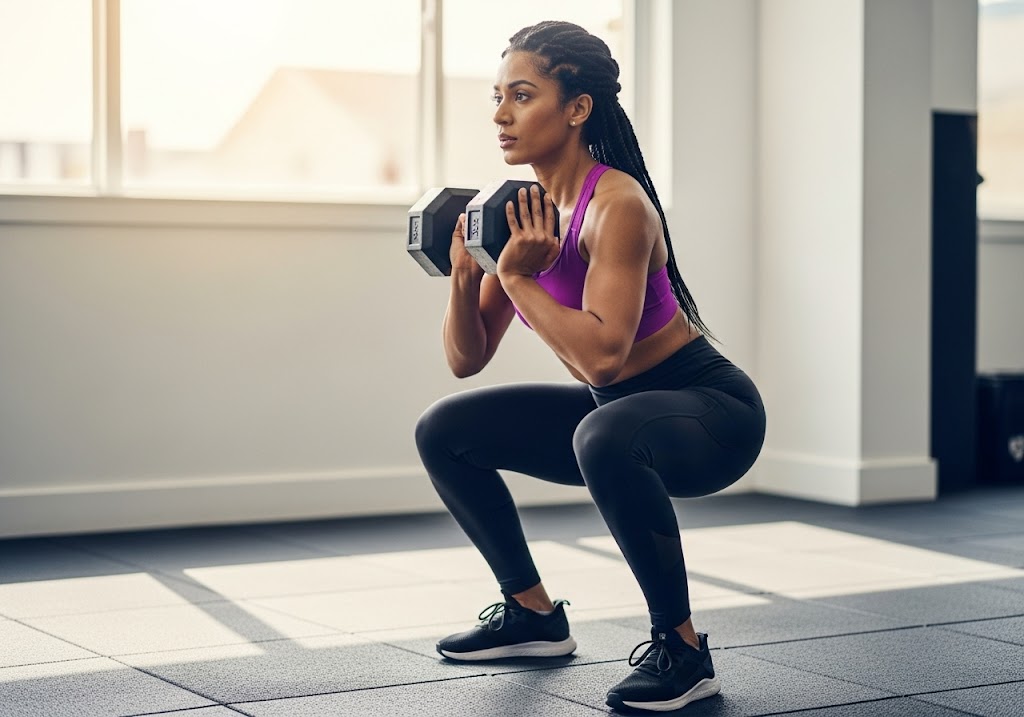
Benefits of Perfect Squat
Mastering how to do a perfect squat provides benefits that extend far beyond the gym or workout space. These advantages impact daily life activities, athletic performance, and long-term health outcomes in ways that make squat training invaluable for people of all ages.
- Increased Leg Strength: Builds powerful quadriceps, glutes, and hamstrings for improved daily activities and athletic performance
- Enhanced Core Stability: Strengthens deep abdominal muscles and improves spinal support during all movements and activities
- Better Hip Mobility: Maintains and improves hip flexibility essential for pain-free movement and aging gracefully
- Improved Posture: Strengthens posterior chain muscles that combat forward head posture and rounded shoulders from desk work
- Functional Movement: Mirrors everyday activities like sitting, standing, and lifting objects from the ground safely and efficiently
- Athletic Performance: Improves jumping, running, and direction changes through increased lower body power and coordination
- Bone Health: Weight-bearing exercise stimulates bone formation and helps prevent osteoporosis throughout life
- Metabolic Benefits: Large muscle group involvement increases calorie burn during exercise and for hours afterward
For complete fitness development, exploring programs that combine squats with other movements provides comprehensive training approaches for total body health and performance.
Separate myth from reality and learn the facts with does pull ups increase height
Common Mistakes in Perfect Squat
Avoiding these frequent errors accelerates your progress while preventing injuries that could derail your training. Many people unknowingly make these mistakes when learning how to do a perfect squat, limiting their results and potentially causing harm over time.
- Knee Valgus: Allowing knees to cave inward creates stress on knee ligaments and reduces power generation significantly during squatting movements
- Forward Lean: Excessive forward torso lean shifts stress to the lower back and reduces glute activation throughout the movement pattern
- Partial Range: Stopping short of full depth limits muscle development and mobility benefits while creating strength imbalances
- Rising on Toes: Coming up on the balls of your feet reduces stability and power while creating balance issues
- Rushing the Movement: Moving too quickly through the squat reduces muscle tension and increases injury risk substantially
- Poor Breathing: Holding breath improperly or breathing at wrong times reduces performance and stability during heavy squats
Understanding these common errors helps you maintain awareness of proper technique while practicing. Focus on one correction at a time rather than trying to fix everything simultaneously for better learning and retention.
For pull-up training that complements squat development, calisthenics close grip pull ups and calisthenics wide grip pull ups provide excellent upper body balance.
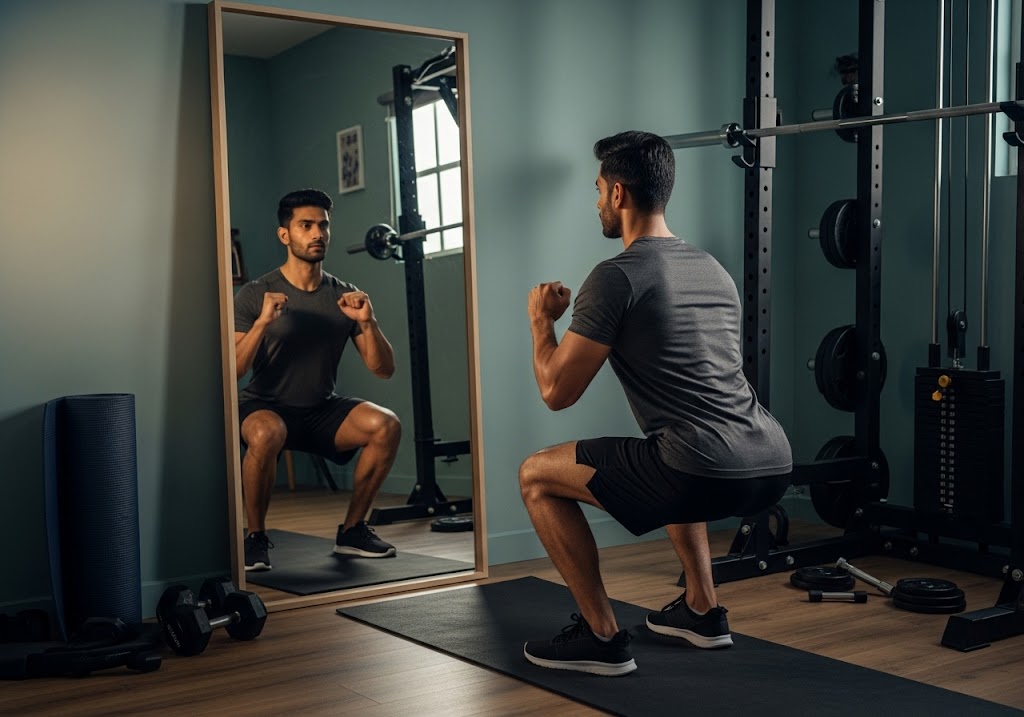
Try These Squat Modifications
These squat variations provide options for different fitness levels, mobility limitations, and training goals. Mastering how to do a perfect squat includes understanding when and how to modify the movement to match your current abilities while working toward full range squats safely.
| Modification | Difficulty | Equipment | Primary Benefit |
| Wall Squat | Beginner | Wall | Form learning |
| Box Squat | Beginner | Box/Chair | Depth control |
| Goblet Squat | Intermediate | Weight | Front loading |
| Jump Squat | Intermediate | None | Power development |
| Pistol Squat | Advanced | None | Unilateral strength |
| Overhead Squat | Advanced | Weight | Mobility challenge |
For core strengthening that supports all squat variations, how to get a six pack quick provides targeted abdominal training approaches.
How to Do a Perfect Barbell Squat?
Progressing to barbell squats represents a significant step up in complexity and loading potential. Learning how to do a perfect barbell squat requires mastering bodyweight squats first, then gradually introducing the barbell with proper safety considerations and progressive loading strategies.
| Aspect | High Bar Position | Low Bar Position | Safety Considerations |
| Bar Placement | On trapezius muscles | On rear deltoids | Use safety bars/pins |
| Torso Angle | More upright | Slight forward lean | Set below lowest position |
| Muscle Emphasis | Quadriceps dominant | Hip/glute dominant | Consider using spotter |
| Mobility Requirements | Ankle flexibility | Hip flexibility | Warm up thoroughly |
| Weight Capacity | Moderate loading | Heavier loading | Start with empty bar |
| Learning Curve | Easier to master | More technical | Progress 5-10 lbs weekly |
| Best For | Beginners, quad focus | Advanced, strength | Master form before adding weight |
For comprehensive back development that supports barbell squats, how to get a wider back provides essential upper body strength training.
Conclusion
Mastering how to do a perfect squat requires patience, practice, and attention to proper form over heavy weight or high repetitions. Success comes from consistent practice with bodyweight squats before progressing to weighted variations, always prioritizing movement quality over quantity or load. Focus on the fundamental movement patterns, gradually increase difficulty, and listen to your body for safe, effective squat training that builds strength and improves health for life.
Want to master the calisthenics handstand and take your skills to the next level? Whether you’re a beginner or pushing advanced skills, ISC – Indian School of Calisthenics offers expert guidance to help you master bodyweight training. Visit us at SRPF Ground, NH8, Goregaon (E), Mumbai – 400065. For class schedules, personalized coaching, or more details, call +91 77159 53218. Train smart, move better, and unlock your back strength with ISC.
How to Do a Perfect Squat? – FAQs
How do you do a proper squat?
Stand with feet shoulder-width apart, push hips back, lower until thighs are parallel, keep chest up, and drive through heels to return.
How to find your perfect squat?
Experiment with stance width and toe angle until you find the most comfortable, stable position that allows full depth squatting.
What are 5 mistakes when performing a squat?
Knees caving in, forward lean, partial range, rising on toes, and rushing through the movement are common squat mistakes.
What is the 5 * 5 squat rule?
The 5×5 program involves performing 5 sets of 5 repetitions with heavy weight, focusing on strength building over time.
How do I know if I am squatting correctly?
Check that knees track over toes, chest stays up, you reach full depth, and feel muscles working in glutes and thighs.
Do squats build muscle?
Yes, squats effectively build muscle in quadriceps, glutes, hamstrings, and core through progressive overload and compound movement patterns.
What are the risks of squatting?
Poor form can cause knee, back, or ankle injuries, while excessive weight without proper preparation increases injury risk significantly.
What are 5 technique points for squats?
Proper stance, hip hinge initiation, controlled descent, full depth, knee tracking, and explosive ascent are key technique points.
Do squats increase test?
Squats may temporarily increase testosterone due to large muscle mass involvement, though long-term effects vary by individual.
How many squats should I do a day?
Beginners should start with 20-50 squats daily focusing on form, gradually increasing volume as strength and technique improve.
